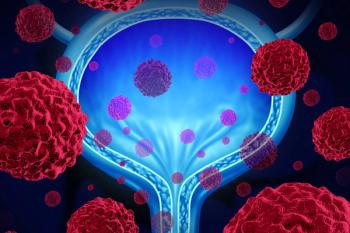
Intravesical Chemo After Bladder Cancer Surgery Can Reduce Recurrence
Treatment with intravesical gemcitabine following surgery reduced the risk of recurrence in patients with low-grade non–muscle invasive bladder cancer.
Treatment with one intravesical administration of gemcitabine immediately following transurethral resection of bladder tumor (TURBT) was well tolerated and reduced the risk of recurrence in patients with low-grade non–muscle invasive bladder cancer, according to a new study.
“Cancer recurrence is common for people diagnosed with this less aggressive form of bladder cancer,” said Edward Messing, MD, of the University of Rochester Medical Center in Rochester, New York, in a
Messing presented results of the
The median age of patients in the study was 66 years, and most were male (85%) and white (91%). Patients were followed with quarterly cystoscopies for 2 years, and then semiannually for 2 additional years.
The risk of recurrence was reduced with gemcitabine, with a hazard ratio (HR) of 0.66 (95% CI, 0.48–0.90; P = .010), on an intention-to-treat analysis. A per-protocol analysis showed an even greater risk reduction, with an HR of 0.50 (95% CI, 0.33–0.76; P = .001). Muscle invasive events were rare, at 2.5% in the gemcitabine group and 4.9% in the saline group; 8.5% of gemcitabine and 12.2% of saline patients died during the follow-up period.
The treatment was generally well tolerated, with infrequent adverse events. There were no grade 4 or 5 adverse events; 2.4% of gemcitabine patients and 3.4% of saline patients experienced a grade 3 event.
“This one extra step, using a drug that’s fairly inexpensive, has impressive results,” Messing said, adding that this has been relatively standard practice with other chemotherapy agents for more than 2 decades in Canada and Europe. “Now that we’ve got results from an American study, using a readily available drug that is very well tolerated, maybe American urologists will start using gemcitabine this way. I certainly hope this finally changes our standard of care.”
Newsletter
Stay up to date on recent advances in the multidisciplinary approach to cancer.


















































































